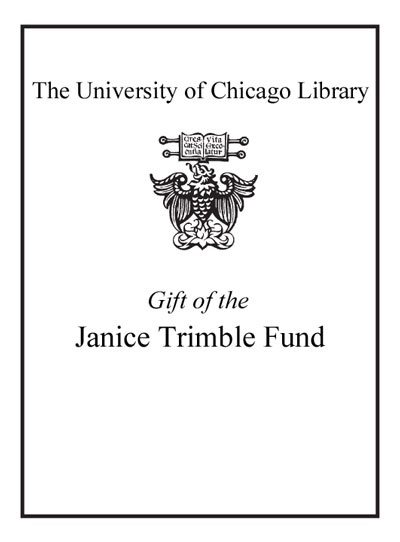Performance perspectives : a critical introduction /
Saved in:
| Imprint: | Basingstoke ; New York, NY : Palgrave Macmillan, 2011. |
|---|---|
| Description: | xx, 244 p. : ill. ; 24 cm. |
| Language: | English |
| Subject: | |
| Format: | Print Book |
| URL for this record: | http://pi.lib.uchicago.edu/1001/cat/bib/8550627 |
Table of Contents:
- List of Illustrations, Figures and Tables
- Notes on Contributors
- Foreword
- Acknowledgements
- Chapter 1. Introduction
- Performance perspectives
- Borth Bench
- Summary
- Chapter summaries
- Activities
- Further reading
- Chapter 2. Body
- Introduction
- 2.1. Any body? The multiple bodies of the performer
- The textual body
- The lived body
- The ecstatic (or fleshly) body
- The recessive (or visceral) body
- The unnatural body
- The imagined body
- 2.2. Some body and no body: the body of a performer
- Some body
- No body
- A somebody or a nobody
- The 'at risk' body
- The ageing body
- 2.3. Every body: performance's other bodies
- Some bodies observed
- The spectating body
- The social body
- The uncomfortable body
- The absent body
- The transformed body
- The irreplaceable body
- Activities
- Further reading
- Chapter 3. Space
- Introduction
- 3.1. Event-space: performance space and spatial performativity
- Performing space
- Event-space and spatial events
- The end of illusion
- The empty space
- Disciplinary manoeuvres
- Presencing architecture
- 3.2. Scenographic space and place
- 3.3. Audience space/scenographic space
- Performance space and the audience
- Performance place and scenographic space
- The empty space and the performer
- Activities
- Further reading
- Chapter 4. Time
- Introduction
- 4.1. Theatre, technology and time
- Postmodern time
- Extratemporality
- Freezing time
- Conclusion time
- 4.2. Ghost Donce: time and duration in the work of Lone Twin
- 4.3. The lives and times of performance
- The unique connection between performance and time
- Antony Gormley and the Fourth Plinth
- Grasping time
- Conclusion
- Activities
- Further reading
- Chapter 5. Technology
- Introduction
- 5.1. Gaming and performance: narrative and identity
- Computer games as drama
- Self-representation and the avatar
- Being there, doing that
- The fourth wall
- Conclusion
- 5.2. Swan Quake: House - 'messing the system up'
- SwanQuake: House: A personal experience (Sita Popat)
- Interview with Ruth Gibson and Bruno Martelli
- 5.3. Performance and technology: the myth of disembodiment
- Introduction
- Cyberspace
- 'Touching with my eyes'
- Liveness
- Is any body out there?
- Conclusion
- Activities
- Further reading
- Chapter 6. Interactivity
- Introduction
- Two perspectives on interaction
- 6.1. Boalian perspectives on interactivity in theatre
- Introduction
- The real and the fictional
- What kinds of interactivity are there?
- What does the audience contribute?
- What are the challenges for the actors?
- The need for closure and for support post-event
- Conclusion
- 6.2. Interactivity and the work of Blast Theory
- 6.3. Interactivity: functions and risks
- Interactivity and performance
- Interactive performance is always incomplete
- Interactivity in practice
- Spaces of interactivity
- Conclusion
- Activities
- Further reading
- Chapter 7. Organization
- Introduction
- 7.1. Performance, culture, industry
- Value, assets and returns
- Communities of practice
- Conclusion
- 7.2. Organizational agility and improvisation
- 7.3. Performance, organization, theory
- The machine metaphor
- Organization as organism
- Organization as network
- Activities
- Further reading
- Chapter 8. Epilogue
- Bibliography
- Index

